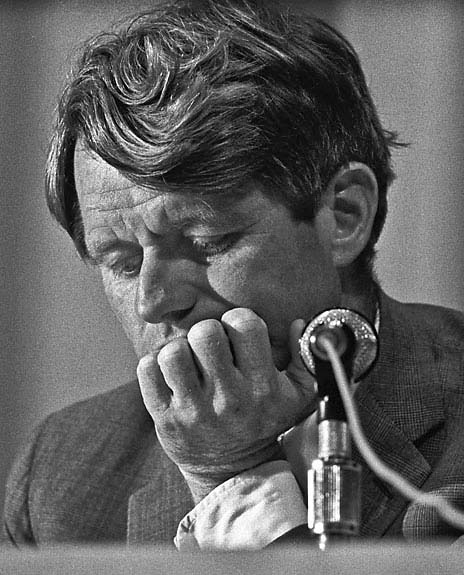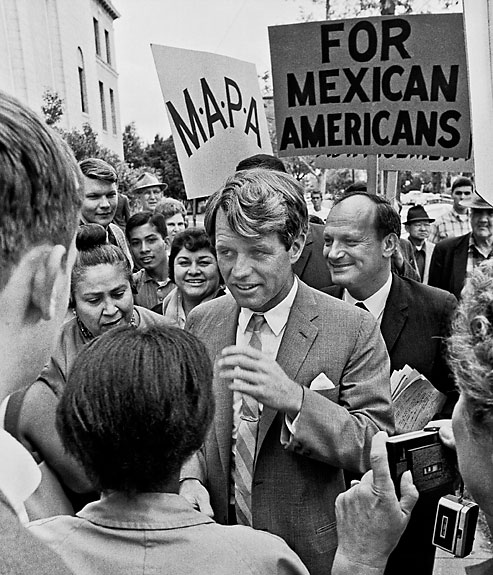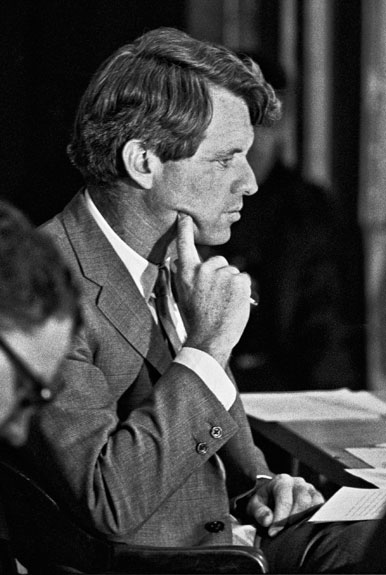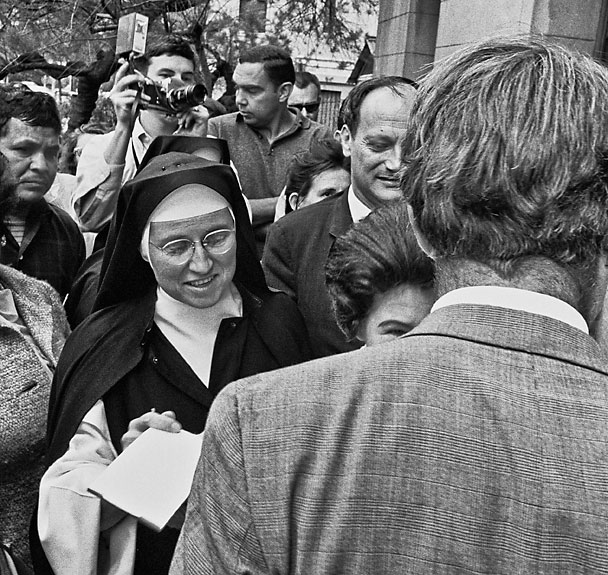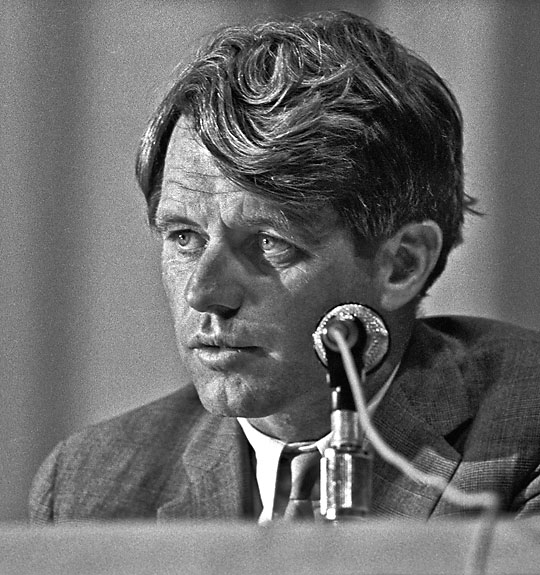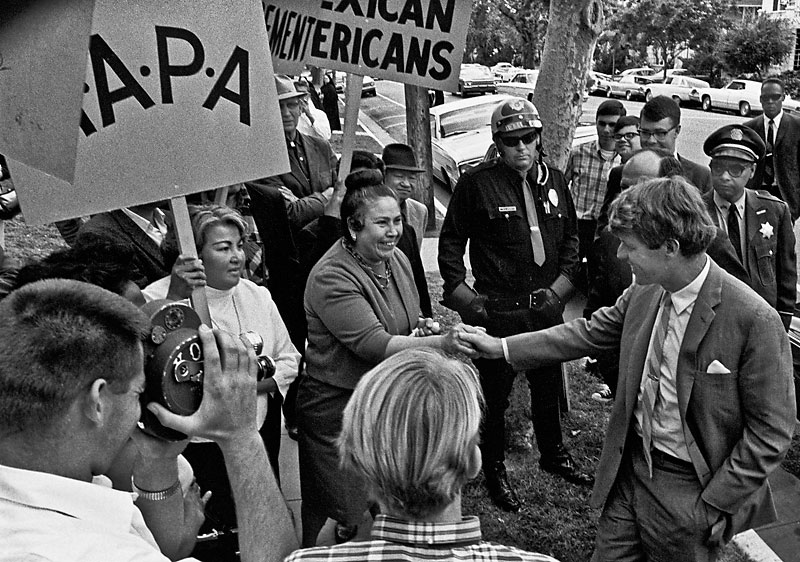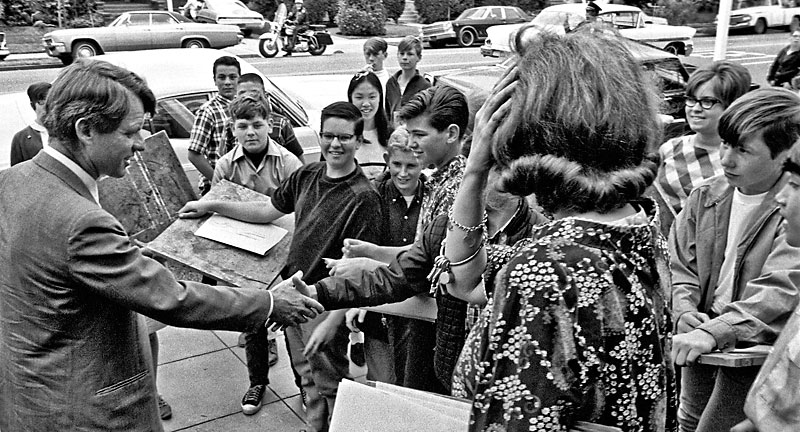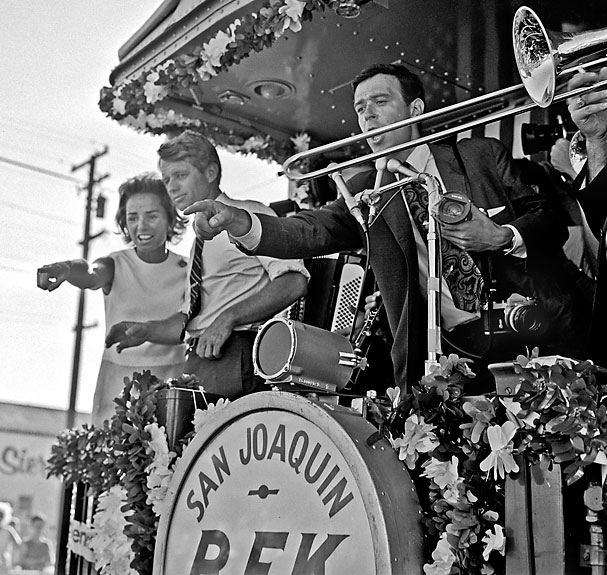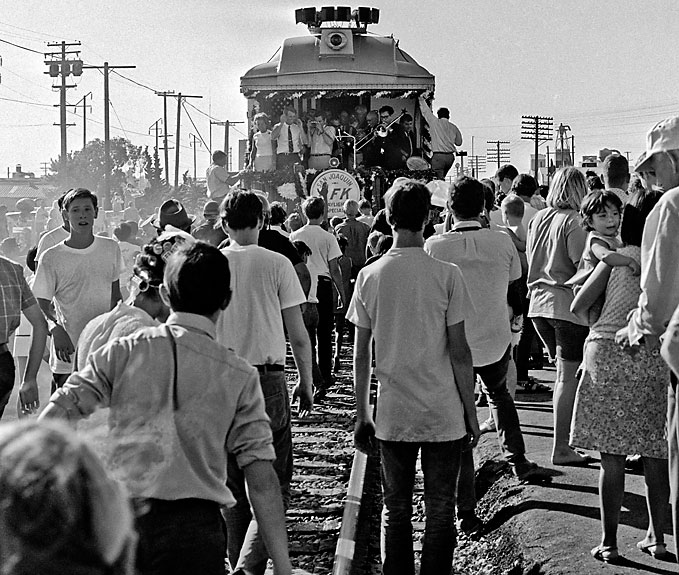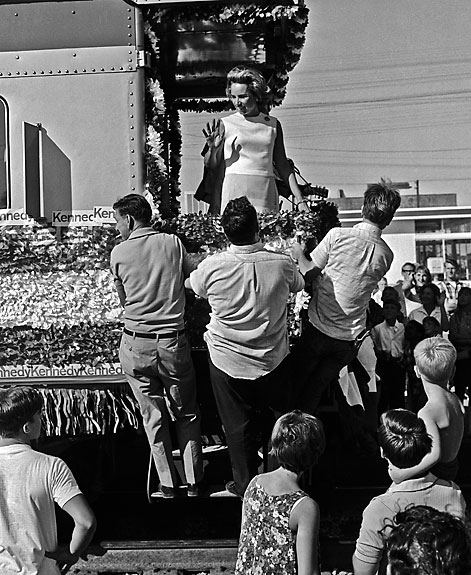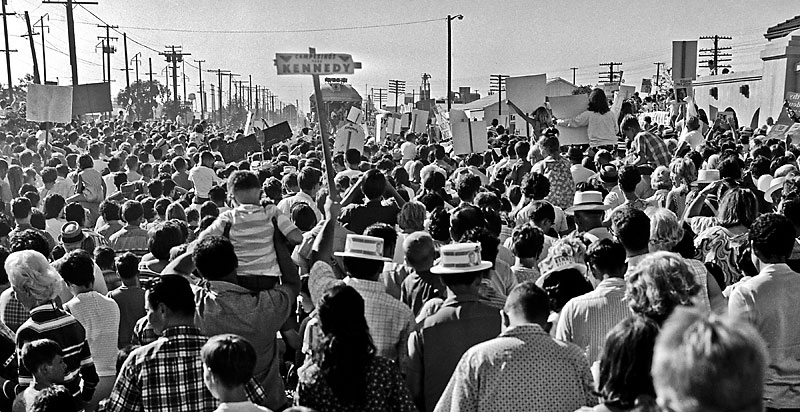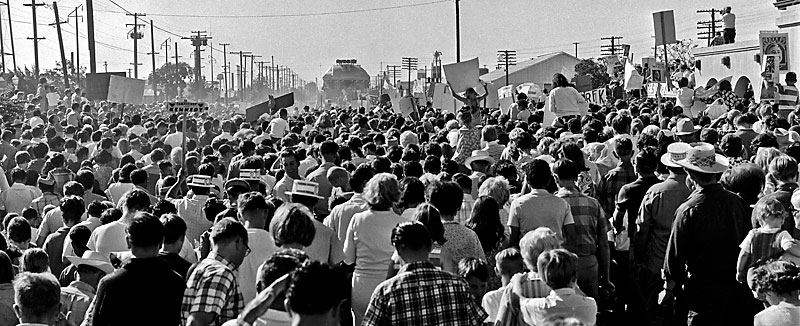In March of 1968 I had been on the Modesto Bee photo staff just under two years and had long since earned my stripes with the editors and photographers, so I was given my first big assignment of national importance: to photograph Robert F. Kennedy at the Senate Hearings in Stockton, California. As a lifelong Democrat, getting to photograph RFK was a dream comes true. The Photo Assignment appeared simple and straightforward, “Old Stockton High School Auditorium, Stockton, Senate Hearings, Robert Kennedy, 1:00 p.m.â€Â Chuck Rodgers, the chief photographer at the time, called out to me with a big grin as I went out the door, “Screw on your objectivity glasses!â€Â I knew what he meant.
I arrived at the school an hour early and was greeted by some of my fellow photojournalist friends who asked me, “Why weren’t you on the tour?â€Â There was a tour? I didn’t know about any tour. They quickly informed me that since the hearing was about poverty in America, RFK had taken a tour into Stockton’s poorest areas for several hours that morning. One of the more blowhard photographers gloated about the great photos he got, as Bobby talked one-on-one with kids. Immediately, I realized the missed chance to get great classic images of Bobby in the midst of real poverty and real people in the Delta.
This first lesson was one of those hard experiences that have made me a better photojournalist. I never again left so much to the assignment editor. When I finally talked to him later that day, I found out that his priorities were different from mine. He knew about the tour but dismissed it because he didn’t think it would contribute to the written piece he planned (even though it would have). From that point forward, I did my own research so I wouldn’t miss a morning tour or whatever extras might enrich an assignment beyond what the assigning editor had envisioned. I also learned that it was essential to discuss with my editors what factors they believed were visually important to a story—not only so that I would capture the images they wanted, but also so that I could anticipate what they had overlooked.
This image of Bobby is my favorite. Using a clunky Nikkor 300mm f4.0, wide open at 1/60th of a second, I squeezed off a handful of images from the press area.  To see my images on Photoshelter click here.
Before the hearing, a good-sized group surrounded RFK and greeted him with smiles and outreached hands.
This image was taken from stage left on the steps leading to backstage. I went through a side door that I calculated would get me backstage. This is where Rafer Johnson, 1960 Olympic gold medalist in the decathlon and RFK bodyguard, taught me the second lesson of the day by knocking me into the stage rigging as he demanded, “Where is your pin?â€Â He then explained the credentialing process as I apologized. He said he would have hit me harder if he had really thought I was a threat. It was a memorable introduction to the importance of credentialing.
The crowd was cheerful and excited except for this nun who caught my eye. She started crying when Bobby came close.
I haven’t done much with these portraits of RFK. At the time, the Modesto Bee ran only the photo of the crowd greeting him as he arrived at the school.
Members of the Mexican American Political Association greet the Senator on his arrival at Stagg High School.
Stagg students get their chance to shake Kennedy’s hand.
By May of 1968, Robert F. Kennedy had declared his candidacy for the presidency and was in the thick of the California primary. On May 30, 1968, Kennedy and his wife were traveling up the Central Valley on a train doing whistle stop campaign speeches. AP and the bigger papers were on the train the full trip, but we were told a photographer and reporter could get on the train in Turlock and ride as far as Modesto. I wanted that assignment, but it went to Chuck, the chief photographer. I would be on the ground at the rail station in Modesto. So I set out to make the best images from the vantage point I was given. At first I was disappointed that the Los Angeles AP photographer was in my frame, but now I like the whole feeling of a hectic campaign stop.
The train arrived in Modesto late in the afternoon and most of the activities were in the backlight. Golub’s Corollary to Murphy’s Law states that the best possible image comes in the worst possible light. I knew before I got there that I wanted to shoot from the left, from the right, and from the center. I was so inexperienced I didn’t know that capturing all these angles should be standard. Photographers often take too many shots from one side because crowds can be difficult. This crowd certainly turned out to be hard to move through, but I stuck to my plan. First, I worked my way to the East side of the observation deck and got as close as possible to the candidate. Next, I pulled back and cut a path to the other side where I saw Ethel Kennedy waving to the crowd. Finally, as the train pulled out of the station I moved to the rear of the crowd and got images of the spectators and candidate’s party as they left.
Ethel Kennedy waving to the spectators with full sun on her.
My back-up camera was my Rolieflex twin lens reflex, so I used it to get all of the images of the crowd as the train left the station.
I learned a lot from these two assignments, although it was also clear that at the age of 25 I still had more to learn.
